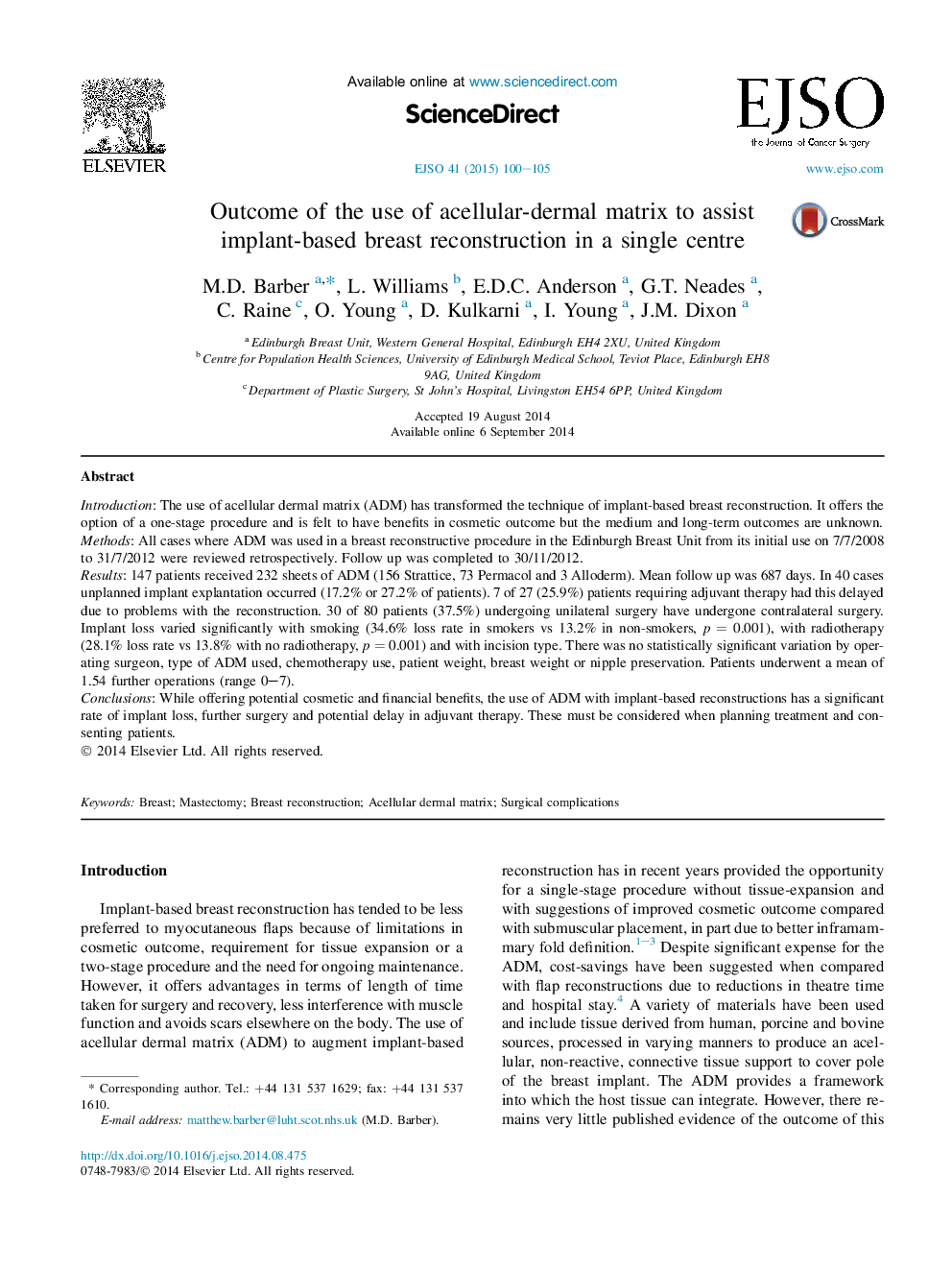| Article ID | Journal | Published Year | Pages | File Type |
|---|---|---|---|---|
| 6191718 | European Journal of Surgical Oncology (EJSO) | 2015 | 6 Pages |
IntroductionThe use of acellular dermal matrix (ADM) has transformed the technique of implant-based breast reconstruction. It offers the option of a one-stage procedure and is felt to have benefits in cosmetic outcome but the medium and long-term outcomes are unknown.MethodsAll cases where ADM was used in a breast reconstructive procedure in the Edinburgh Breast Unit from its initial use on 7/7/2008 to 31/7/2012 were reviewed retrospectively. Follow up was completed to 30/11/2012.Results147 patients received 232 sheets of ADM (156 Strattice, 73 Permacol and 3 Alloderm). Mean follow up was 687 days. In 40 cases unplanned implant explantation occurred (17.2% or 27.2% of patients). 7 of 27 (25.9%) patients requiring adjuvant therapy had this delayed due to problems with the reconstruction. 30 of 80 patients (37.5%) undergoing unilateral surgery have undergone contralateral surgery. Implant loss varied significantly with smoking (34.6% loss rate in smokers vs 13.2% in non-smokers, p = 0.001), with radiotherapy (28.1% loss rate vs 13.8% with no radiotherapy, p = 0.001) and with incision type. There was no statistically significant variation by operating surgeon, type of ADM used, chemotherapy use, patient weight, breast weight or nipple preservation. Patients underwent a mean of 1.54 further operations (range 0-7).ConclusionsWhile offering potential cosmetic and financial benefits, the use of ADM with implant-based reconstructions has a significant rate of implant loss, further surgery and potential delay in adjuvant therapy. These must be considered when planning treatment and consenting patients.
